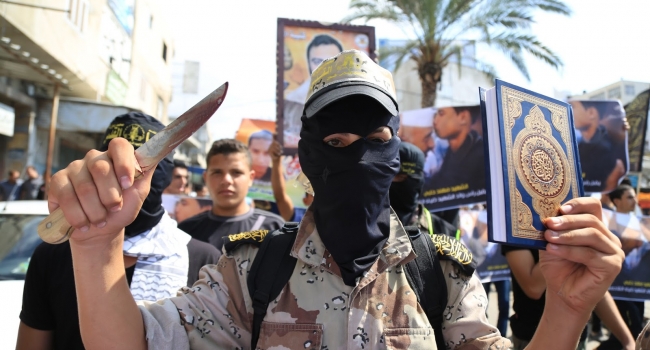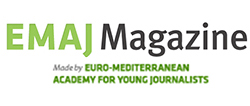Intifada 2.0 / The new wave of violence in Israel and Palestine

Commentary written for “Mediterranean Affairs” - Indiscriminate Palestinian lone-wolf terror attacks are not new, but starting from October 2015, they have been carried out on a daily basis by young Palestinians – mostly teenagers from East Jerusalem – armed with a knife, a car, or a gun.
The Israeli response has been strong: Netanyahu’s government has taken a series of controversial measures like house demolitions, revocations of Jerusalem residency, roadblocks around certain Arab neighborhoods of Jerusalem, and tacit on-the-spot execution of terrorists.
The extrajudicial execution of attackers, besides causing concern among Palestinian civilians, afraid to be accused of terrorism and being instantly killed, has made clear the suicidal character of the attacks: fanatic missions carried out with the awareness of a probable death.
The suicidal aspect, together with daily attacks and the use of civilians as targets, has caused many analysts and journalists to compare this new wave of terror with the suicide terror attacks of the First and Second Intifada.
If the two phenomena share the same ‘atmosphere’ (how in the security field is defined the sum of social, religious and political elements shaping the mood of the Palestinian population), there are several differences distinguishing them.
Comparison with the First and Second Intifada
During the First and Second Intifada, attacks were meticulously planned by armed wings of organizations like Hamas, Islamic Jihad, Popular Front for the Liberation of Palestine (PFLP) and Fatah. Terror attacks were executed with the technique of suicide bombings to cause as many causalities as possible among the Israel civilian population.
They were organized according to the rigid hierarchic structure of each organization. They involved the group’s political bureau, the armed wing, the cell of recruitment and the executers – who, too, were affiliated with the groups. Immediately after attacks, terrorist groups were claiming responsibility and releasing martyrdom videos.
None of these elements can be found in the current situation. Attacks are carried out spontaneously by young individuals not affiliated with any political or armed Palestinian group. Moreover, except for one car bomb attempted attack carried out by a Palestinian woman at the checkpoint between Jerusalem and the settlement of Ma'ale Adumin, explosive belts and bombs have been replaced with knives, cars, or handguns often stolen from soldiers.
Though groups are not involved in the planning of the attacks, their social media accounts welcome and praise each of them. Unlike the past, incitement to violence does not follow traditional paths. It runs over the internet, where videos of extremist imams and anti-Israeli cartoons, created by radical groups, are shared on Facebook and Twitter. The goal is to encourage young Palestinians to stab or run over Jews for the liberation of the mosque of al-Aqsa, Jerusalem, and the whole Palestine.
The difference between the first two intifadas and the current situation is even clearer if we look at the numbers. In the past, the death toll numbered in the thousands on both sides. On the contrary, since the new violent escalation started, the number of victims is a few dozen on both sides. Same thing for the number of Israeli battalions patrolling the territories and the acts of resistance carried out by Palestinian shabab (youth) against the IDF in the West Bank and in East Jerusalem. In the past, hundreds of IDF battalions faced thousands of Palestinians in each demonstration/clash. Today the biggest protest so far counted about six hundred people and the number of battalions engaged to control the territories is limited to a few dozens.
What drives a young Palestinian – born and raised after the Oslo Agreements (1993), and generally holding the Israeli ID card or citizenship – to carry out a suicide mission and stab an Israeli civilian, is unclear and debated.
Some blame the incitement by radical groups and the growing anti-Semitic feelings in the Palestinian society. Others point the finger to the frustration caused by the settlers violence and terrorism in the West Bank, the Israeli occupation, and the lack of positive political prospects due to the absence of serious peace negotiations. It is very likely that both factors play a role, since one does not exclude the other.
On the Israeli side, despite the concerns of the civilian population, many tend to consider the new type of terror attacks as the most evident proof of the weakened condition of the Palestinian resistance/terror groups.
However, it is possible to see from graphic videos released by the Islamic State (ISIL) in Iraq, Syria, Sinai and Libya, that from the point of view of radical Islam a knife is not a sign of weakness but the most traditional symbol of jihad. If ISIL cells in the Palestinian territories are insignificant, it is possible that stabbing attacks are the result of the influence that the communication techniques of ISIL have on the local Palestinian jihadist groups that incite youths to defend the mosque of al-Aqsa. Moreover, stabbing and vehicular attacks are just the tip of the iceberg: they not represent the level of violence mounting in the Palestinian society.
The inner Palestinian competition for power
Presenting the current situation as the sole fight between Israelis and Palestinians would be superficial and misleading. Within the conflict, there is harsh competition between the different souls of Palestinian resistance.
In recent years, the Islamist movement of Hamas conquered hearts and minds of many Palestinians in the West Bank. It eroded the popular base that Fatah, the Palestinian National Authority (PNA), and president Mahmoud Abbas himself counted on. This could be explained by the corruption characterizing many aspects of the Palestinian government and by the general radicalization and Islamization of the Palestinian political spectrum.
The responsibility, however, falls on Israel too. With the Oslo I and II Accords signed in 1993 and 1995, Israel and the PNA engaged in a series of economic, political and security collaborations aiming at improving mutual trust and paving the way for additional peace negotiations that would lead to a peaceful creation of a Palestinian State.
After the Second Intifada, the various Israeli governments that succeeded each other adopted a more conservative line, increased settlement constructions, and stopped considering Abbas as a partner for peace. It was the end of the peace process.
Without it, the Palestinian Authority employed a dual policy: it engaged a series of unilateral moves in the international arena, but it also kept the security collaboration with Israel in order to control the territory and limit Hamas’ progressive infiltration in the West Bank. If the unilateral moves increased Israeli suspicions and distances, the collaboration with Israel – often implemented with the arrest of Hamas activists and terrorists or with the foil of terror attacks – led many Palestinians to think of the PNA more as an Israeli tool to control the West Bank than as a government interested in serving the interests of the Palestinians.
Hamas’ public support increased due to the successful propaganda spread over the internet and to the thousands of rockets fired from the Gaza Strip into Israel in the latest wars.
The competition for public support and power radicalized every Palestinian political movement to the point that, pressured by its armed wings (Tanzim and the al-Aqsa Martyrs’ Brigades), Fatah joined the group of factions glorifying martyrs and inciting new terror attacks on social networks.
Even Abbas changed tone by avoiding condemning stabbing attacks and threatening to stop every security collaboration with Israel or, eventually, dismantling the PNA and leave the IDF with the heavy and dangerous burden of controlling the entire West Bank, including the Palestinian high- populated cities and refugee camps.
The most dramatic scenario
According to the future behavior of Israeli and Palestinian political actors, the new violent escalation could end soon, persist for long time or, in the worst case, be the prologue of a more dramatic situation.
If Israeli occupation is the major factor that could decrease the violence, it is very Unlikely that Netanyahu – who leads a right-wing government pressured by more pro-settler extremist fringes – will disengage from the West Bank. A situation like that would endanger the lives of hundreds of thousands of settlers.
Same thing for the peace process: if it could stop the escalation, it is hard to believe that the Israelis will negotiate with a counterpart, the PNA, deprived of any credit among the Palestinians. In addition, it is even harder to imagine the International Community diverting its focus from the Iraqi-Syrian crisis to the Israeli-Palestinian conflict. It seems evident that neither Netanyahu nor Abbas have an exit strategy from this loop. The evolution of the current situation will depend on the precarious relationships on the field.
For now, lone wolves are still attacking on a daily basis. Though Israeli intelligence tries to track the internet profiles of possible ‘ticking time bombs,’ the only short-term solution to stop them is respecting the status quo over the al-Haram al- Sharif/Temple Mount, pressuring the King of Jordan Abdullah II to leverage on Abbas to calm down the crowd, and helping the PNA to expand its margins of maneuver so that it may regain credibility among Palestinians.
The situation has a high potentiality of violence. If it deteriorates further, there could be a total collapse of the Palestinian Authority or a tighter competition between the various Palestinian factions. In both scenarios, the armed wings would not limit themselves to online incitement to violence, but would activate their militias to carry out suicide attacks and open their rich arsenals (hidden in refugee camps around East Jerusalem and the West Bank) in order to initiate a general armed uprising. This would be the worst scenario. It would be the Third Intifada that could reshape the region for years.
Alessandro Di Maio
Commentary written for “Mediterranean Affairs”, Report n.10, November 2015 - View/Download PDF

















